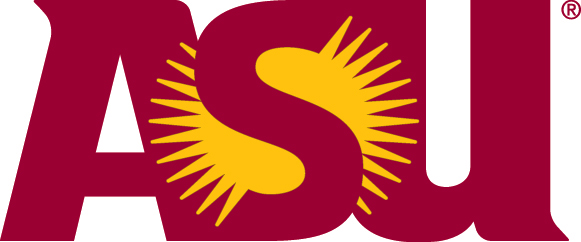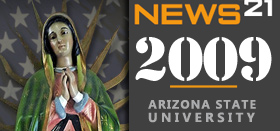By Jason Manning — ASU News21 Managing Editor
The word innovation gets thrown around A LOT these days within the journalism profession. Nearly all news organizations are talking about innovation and some are hiring “innovation editors” whose job descriptions are often nebulous at best. An inside joke in the industry says to never accept a job with “innovation” in the title — because your days will be numbered.
Innovation is often in the eye of the beholder. What seems ground-breaking to one journalist may elicit shrugs from another.
At ASU News21, we came up with our own simple definition. For us, innovation could be any way of reporting or presenting news that has not been tried before — or has been tried only sparingly. We added the requirement that these new methods should improve the news for our audience. We challenged ourselves to think of ways to help readers and viewers have a better experience when interacting with our content.
A brief explanation of each of our projects is included below. Are these projects truly innovative? Our readers, viewers and colleagues can judge for themselves.
Deanna Dent is a talented multimedia reporter who had been mulling a project on the Virgin of Guadalupe for some time before joining the News21 project. The Virgin’s story is unique. What began as a purely “Latina” religious character has transcended all ethnic, national and cultural boundaries. Deanna felt the story could be best told using multiple content formats. She also wanted to let viewers skip to any part of the story they wanted to at any time. She proposed providing only the barest form of linear structure — in the form of three main “pods” with branching “subpods.” News21 visual reporting instructor Andrew Long helped Deanna conceive of the design framework. She then worked with Web developer Britton Halle to complete the project. We have seldom seen media presented in this fashion on news Web sites.
During the News21 seminar taught by Professor Rick Rodriguez, reporters Elizabeth Shell and Jeremy Pennycook discovered an interest in education among Latinos. The more they learned about the challenges facing Latino students, the more concerned they became. So they decided to focus on a few programs that have won national recognition for their success in helping Latino students close the achievement gap. They thought the story was best told primarily through video — but they wanted the ability to present other content formats at the same time, in as seamless a fashion as possible, so that one could watch the video while looking at a graphic, reading a bio, etc. When Jeremy and Elizabeth searched for a tool that would help them do this, they found none. So they decided to work with developer Britton Halle to create one. The result is an an Adobe Air application that can be downloaded here. The project is open source. We welcome additions and improvements.
Two News21 reporters, Travis Grabow and Emily Graham, felt drawn to aspects of religion in Latino life. They started their research independently but soon came to the conclusion that combining their projects would make for a stronger story. Emily focused on “re-conversos,” those Latinos who find they have Jewish roots and decide to convert. Travis focused on Latinos leaving the Catholic church for “newer” religious traditions. A “looking back” to Judaism and a “looking forward” to new faith motif emerged from their discussions. Developer Caige Nichols adopted a “carousel” tool that allows viewers to scroll forward and back through the project — as if through time. Along the way viewers interact with the story via video and text.
Reporter Evan Wyloge felt drawn to the current debate surrounding “immigration amnesty” or a “path to citizenship.” While researching the story, he became convinced that most people don’t realize that immigration amnesty happened before in the United States — under President Ronald Reagan in 1986. Evan set out to tell the story of that program’s impact and to look for a place where a new amnesty might have the most effect today. He also wanted very much to engage readers, policy experts and the subjects of his stories in an ongoing discussion. The result is the Twitter widgets readers find on each page of his story. They are calibrated to bring in discussion on very specific topics — and to make it easy to start new discussions. Evan started out to build his own social media aggregator, but the folks at Twitter pre-empted him with an effective aggregator/widget tool of their own. Evan is still working on his tool with developer Caige Nichols. They plan to make it more effective for journalist who want to tap social media in an intelligent way.
During the News21, seminar reporters Chrystall Kanyuck and Chris Cameron became interested in the subject of undocumented immigrants who serve in the U.S. military. This interest soon expanded to include many aspects of Latinos in the military. The reporters were struck by the compelling human stories as well as interesting data they encountered. Convinced that most presentations of data in news articles are often removed from personal stories, Chris and Chrystall set out to create a presentation that presents data in a visually compelling way while also giving respect and weight to individual people. With the help of instructor Andrew Long and developer Caige Nichols, the pair put together a Flex/Flash presentation to accomplish their goal.
CROSSING LINES
No News21 reporter traveled farther or into more challenging circumstances than Dave Kempa. During the seminar, Dave became interested in the motivations of border crossers. This led to a number of trips to the border region and one trip to a small town in southern Mexico. Dave expanded his inquiry to include not only the motivations of border crossers but the circumstances and people they leave behind. He also looked at attempts by people in Mexico to build their own economic opportunities so that their children won’t feel compelled to migrate. Dave has an unabashed love for the written word combined with respect for the role of photography and video in storytelling. He wanted to combine the two in a unique way — to give readers/viewers the best experience possible. The result is a three-chapter article that automatically cues relevant multimedia at just the right places in the story.
News 21 reporter Christine Rogel delved into the complex issue of immigration law in the workplace, with a particular focus on the federal program known as E-Verify. Christine had to dig deep into state and federal policies — as well as the personal stories of workers and business owners. As she finished her project Christine sought a way to present this policy-heavy story in a way that would invite readers in. The result is a Flash video introduction in which Christine literally becomes a part of the story package, personally explaining the issues and inviting the audience to learn more.

